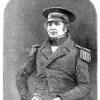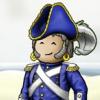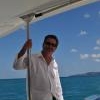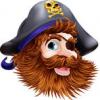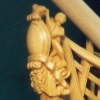MORE HANDBOOKS ARE ON THEIR WAY! We will let you know when they get here.
×
-
Posts
410 -
Joined
-
Last visited
Reputation Activity
-
 Erebus and Terror reacted to druxey in HMS Terror by Erebus and Terror - FINISHED - Scale 1:48 - POB - as fitted for polar service in 1845
Erebus and Terror reacted to druxey in HMS Terror by Erebus and Terror - FINISHED - Scale 1:48 - POB - as fitted for polar service in 1845
Nice to see you back and progressing, E&T.
Try laminating the wales in two or three layers. Don't attempt to bend them in one! You will certainly need to spile the lower hull planking, especially at the bow. Looking very nice so far.
-
 Erebus and Terror got a reaction from popeye the sailor in HMS Terror by Erebus and Terror - FINISHED - Scale 1:48 - POB - as fitted for polar service in 1845
Erebus and Terror got a reaction from popeye the sailor in HMS Terror by Erebus and Terror - FINISHED - Scale 1:48 - POB - as fitted for polar service in 1845
PLANKING TERROR'S TOPSIDE
Over the summer months, I have been working steadily on my model's topside planking, while it seems the real Terror has been biding her time, waiting to reveal herself to the world. Despite the excitement of the discovery, my work continues, though perhaps with somewhat more adrenaline than previously.
I began this part of the project by cutting out the numerous ports on Terror's bulwarks, and then proceeded with planking the entire topside down to the level of the chock channels. The planking followed a carefully laid out plan that I devised for the entire model. Based on data in 1845 stern plans by Oliver Lang, the strakes on my model Terror vary between nine and ten scale inches wide whenever possible. Consistent with information gleaned from the original ship's contract, each strake is approximately 24 scale feet long (where possible), and follows a three plank shift. Deviations from this plan were necessary in many portions along the topside, where ports interrupted the normal planking layout (and common sense indicated a butt would not be necessary). I marked the position of the port sills using paper guides (this is the reverse
of the printed plan, used on the port side) Each port was carefully cut out with a sharp blade. The port sills were lined with holy. Terror's bulwarks were riddled with ports. Here the bitts have been modeled
from Swiss pear and are portrayed in an unworn condition. Details of additional bitts. In the stern, Terror had two large chocks on each side. These were cut from Swiss
pear sheet stock and the correct shape transferred to them from a card cutout. Ensuring the chocks are symmetrical. The finished pieces. And again after installation. Planking began at the solid ice channels and proceeded strake by strake (tier by tier), following the
plan I had devised. Terror has an extremely bluff bow, and care had to be taken here. While spiling
would be preferred, I am constantly worried about my wood supply and used a technique taught
by Chuck Passaro. It worked very well, despite planking in scale thickness (here 4"). The port side, after a coat of Minwax Wipe on Poly. Not the bottom
strake is left untreated so that I can glue the ice channel top to it. Comparing the symmetry of planking on both sides of the knee. Following
the planking plan and marking off the hull carefully ensures
less variation. Terror's bow is so bluff, and the scale plank so thick, that I resorted to using a plank bending tool
to achieve the proper curvature. I dread planking the second layer on the wales, which
are over 9 scale inches thick! I expect hot water immersion , or hot iron bending,
will be my only option there. Planking surrounding the many ports at Terror's bow. The planking plan indicated that one plank, in particular, would be very complex.
I measured and marked it off carefully before cutting. Installation involved dry fitting, careful sanding, dry fitting again, sanding again, and
repeating constantly until it was acceptable. Planking amidships, showing the three plank shift. Detail of the chocks after planking. The completed planking run on Terror's starboard side. The next task in my project will be to frame the stern lights (windows) and install them. Until then, I hope we get to see more images of the real ones from Franklin Expedition 2016. -
 Erebus and Terror got a reaction from Dee_Dee in HMS Terror by Erebus and Terror - FINISHED - Scale 1:48 - POB - as fitted for polar service in 1845
Erebus and Terror got a reaction from Dee_Dee in HMS Terror by Erebus and Terror - FINISHED - Scale 1:48 - POB - as fitted for polar service in 1845
PLANKING TERROR'S TOPSIDE
Over the summer months, I have been working steadily on my model's topside planking, while it seems the real Terror has been biding her time, waiting to reveal herself to the world. Despite the excitement of the discovery, my work continues, though perhaps with somewhat more adrenaline than previously.
I began this part of the project by cutting out the numerous ports on Terror's bulwarks, and then proceeded with planking the entire topside down to the level of the chock channels. The planking followed a carefully laid out plan that I devised for the entire model. Based on data in 1845 stern plans by Oliver Lang, the strakes on my model Terror vary between nine and ten scale inches wide whenever possible. Consistent with information gleaned from the original ship's contract, each strake is approximately 24 scale feet long (where possible), and follows a three plank shift. Deviations from this plan were necessary in many portions along the topside, where ports interrupted the normal planking layout (and common sense indicated a butt would not be necessary). I marked the position of the port sills using paper guides (this is the reverse
of the printed plan, used on the port side) Each port was carefully cut out with a sharp blade. The port sills were lined with holy. Terror's bulwarks were riddled with ports. Here the bitts have been modeled
from Swiss pear and are portrayed in an unworn condition. Details of additional bitts. In the stern, Terror had two large chocks on each side. These were cut from Swiss
pear sheet stock and the correct shape transferred to them from a card cutout. Ensuring the chocks are symmetrical. The finished pieces. And again after installation. Planking began at the solid ice channels and proceeded strake by strake (tier by tier), following the
plan I had devised. Terror has an extremely bluff bow, and care had to be taken here. While spiling
would be preferred, I am constantly worried about my wood supply and used a technique taught
by Chuck Passaro. It worked very well, despite planking in scale thickness (here 4"). The port side, after a coat of Minwax Wipe on Poly. Not the bottom
strake is left untreated so that I can glue the ice channel top to it. Comparing the symmetry of planking on both sides of the knee. Following
the planking plan and marking off the hull carefully ensures
less variation. Terror's bow is so bluff, and the scale plank so thick, that I resorted to using a plank bending tool
to achieve the proper curvature. I dread planking the second layer on the wales, which
are over 9 scale inches thick! I expect hot water immersion , or hot iron bending,
will be my only option there. Planking surrounding the many ports at Terror's bow. The planking plan indicated that one plank, in particular, would be very complex.
I measured and marked it off carefully before cutting. Installation involved dry fitting, careful sanding, dry fitting again, sanding again, and
repeating constantly until it was acceptable. Planking amidships, showing the three plank shift. Detail of the chocks after planking. The completed planking run on Terror's starboard side. The next task in my project will be to frame the stern lights (windows) and install them. Until then, I hope we get to see more images of the real ones from Franklin Expedition 2016. -
 Erebus and Terror got a reaction from popeye the sailor in HMS Terror by Erebus and Terror - FINISHED - Scale 1:48 - POB - as fitted for polar service in 1845
Erebus and Terror got a reaction from popeye the sailor in HMS Terror by Erebus and Terror - FINISHED - Scale 1:48 - POB - as fitted for polar service in 1845
HMS TERROR FOUND!
Some people have asked me how I feel about this discovery. To find out.....
http://buildingterror.blogspot.com/2016/09/hms-terror-found.html
-
 Erebus and Terror got a reaction from Jack12477 in HMS Terror by Erebus and Terror - FINISHED - Scale 1:48 - POB - as fitted for polar service in 1845
Erebus and Terror got a reaction from Jack12477 in HMS Terror by Erebus and Terror - FINISHED - Scale 1:48 - POB - as fitted for polar service in 1845
Thank you Druxey. I hate to speculate on what this means, but the implication from the articles I've read is that it was manned and in good condition when it was in Terror Bay, and therefore supposedly didn't drift there. Regardless, much more archaeological work by Parks Canada will need to be completed before any firm answers can be provided.
-
 Erebus and Terror got a reaction from AntonyUK in HMS Terror by Erebus and Terror - FINISHED - Scale 1:48 - POB - as fitted for polar service in 1845
Erebus and Terror got a reaction from AntonyUK in HMS Terror by Erebus and Terror - FINISHED - Scale 1:48 - POB - as fitted for polar service in 1845
PLANKING TERROR'S TOPSIDE
Over the summer months, I have been working steadily on my model's topside planking, while it seems the real Terror has been biding her time, waiting to reveal herself to the world. Despite the excitement of the discovery, my work continues, though perhaps with somewhat more adrenaline than previously.
I began this part of the project by cutting out the numerous ports on Terror's bulwarks, and then proceeded with planking the entire topside down to the level of the chock channels. The planking followed a carefully laid out plan that I devised for the entire model. Based on data in 1845 stern plans by Oliver Lang, the strakes on my model Terror vary between nine and ten scale inches wide whenever possible. Consistent with information gleaned from the original ship's contract, each strake is approximately 24 scale feet long (where possible), and follows a three plank shift. Deviations from this plan were necessary in many portions along the topside, where ports interrupted the normal planking layout (and common sense indicated a butt would not be necessary). I marked the position of the port sills using paper guides (this is the reverse
of the printed plan, used on the port side) Each port was carefully cut out with a sharp blade. The port sills were lined with holy. Terror's bulwarks were riddled with ports. Here the bitts have been modeled
from Swiss pear and are portrayed in an unworn condition. Details of additional bitts. In the stern, Terror had two large chocks on each side. These were cut from Swiss
pear sheet stock and the correct shape transferred to them from a card cutout. Ensuring the chocks are symmetrical. The finished pieces. And again after installation. Planking began at the solid ice channels and proceeded strake by strake (tier by tier), following the
plan I had devised. Terror has an extremely bluff bow, and care had to be taken here. While spiling
would be preferred, I am constantly worried about my wood supply and used a technique taught
by Chuck Passaro. It worked very well, despite planking in scale thickness (here 4"). The port side, after a coat of Minwax Wipe on Poly. Not the bottom
strake is left untreated so that I can glue the ice channel top to it. Comparing the symmetry of planking on both sides of the knee. Following
the planking plan and marking off the hull carefully ensures
less variation. Terror's bow is so bluff, and the scale plank so thick, that I resorted to using a plank bending tool
to achieve the proper curvature. I dread planking the second layer on the wales, which
are over 9 scale inches thick! I expect hot water immersion , or hot iron bending,
will be my only option there. Planking surrounding the many ports at Terror's bow. The planking plan indicated that one plank, in particular, would be very complex.
I measured and marked it off carefully before cutting. Installation involved dry fitting, careful sanding, dry fitting again, sanding again, and
repeating constantly until it was acceptable. Planking amidships, showing the three plank shift. Detail of the chocks after planking. The completed planking run on Terror's starboard side. The next task in my project will be to frame the stern lights (windows) and install them. Until then, I hope we get to see more images of the real ones from Franklin Expedition 2016. -
 Erebus and Terror got a reaction from Stoyne in HMS Terror by Erebus and Terror - FINISHED - Scale 1:48 - POB - as fitted for polar service in 1845
Erebus and Terror got a reaction from Stoyne in HMS Terror by Erebus and Terror - FINISHED - Scale 1:48 - POB - as fitted for polar service in 1845
PLANKING TERROR'S TOPSIDE
Over the summer months, I have been working steadily on my model's topside planking, while it seems the real Terror has been biding her time, waiting to reveal herself to the world. Despite the excitement of the discovery, my work continues, though perhaps with somewhat more adrenaline than previously.
I began this part of the project by cutting out the numerous ports on Terror's bulwarks, and then proceeded with planking the entire topside down to the level of the chock channels. The planking followed a carefully laid out plan that I devised for the entire model. Based on data in 1845 stern plans by Oliver Lang, the strakes on my model Terror vary between nine and ten scale inches wide whenever possible. Consistent with information gleaned from the original ship's contract, each strake is approximately 24 scale feet long (where possible), and follows a three plank shift. Deviations from this plan were necessary in many portions along the topside, where ports interrupted the normal planking layout (and common sense indicated a butt would not be necessary). I marked the position of the port sills using paper guides (this is the reverse
of the printed plan, used on the port side) Each port was carefully cut out with a sharp blade. The port sills were lined with holy. Terror's bulwarks were riddled with ports. Here the bitts have been modeled
from Swiss pear and are portrayed in an unworn condition. Details of additional bitts. In the stern, Terror had two large chocks on each side. These were cut from Swiss
pear sheet stock and the correct shape transferred to them from a card cutout. Ensuring the chocks are symmetrical. The finished pieces. And again after installation. Planking began at the solid ice channels and proceeded strake by strake (tier by tier), following the
plan I had devised. Terror has an extremely bluff bow, and care had to be taken here. While spiling
would be preferred, I am constantly worried about my wood supply and used a technique taught
by Chuck Passaro. It worked very well, despite planking in scale thickness (here 4"). The port side, after a coat of Minwax Wipe on Poly. Not the bottom
strake is left untreated so that I can glue the ice channel top to it. Comparing the symmetry of planking on both sides of the knee. Following
the planking plan and marking off the hull carefully ensures
less variation. Terror's bow is so bluff, and the scale plank so thick, that I resorted to using a plank bending tool
to achieve the proper curvature. I dread planking the second layer on the wales, which
are over 9 scale inches thick! I expect hot water immersion , or hot iron bending,
will be my only option there. Planking surrounding the many ports at Terror's bow. The planking plan indicated that one plank, in particular, would be very complex.
I measured and marked it off carefully before cutting. Installation involved dry fitting, careful sanding, dry fitting again, sanding again, and
repeating constantly until it was acceptable. Planking amidships, showing the three plank shift. Detail of the chocks after planking. The completed planking run on Terror's starboard side. The next task in my project will be to frame the stern lights (windows) and install them. Until then, I hope we get to see more images of the real ones from Franklin Expedition 2016. -
 Erebus and Terror got a reaction from michael mott in HMS Terror by Erebus and Terror - FINISHED - Scale 1:48 - POB - as fitted for polar service in 1845
Erebus and Terror got a reaction from michael mott in HMS Terror by Erebus and Terror - FINISHED - Scale 1:48 - POB - as fitted for polar service in 1845
PLANKING TERROR'S TOPSIDE
Over the summer months, I have been working steadily on my model's topside planking, while it seems the real Terror has been biding her time, waiting to reveal herself to the world. Despite the excitement of the discovery, my work continues, though perhaps with somewhat more adrenaline than previously.
I began this part of the project by cutting out the numerous ports on Terror's bulwarks, and then proceeded with planking the entire topside down to the level of the chock channels. The planking followed a carefully laid out plan that I devised for the entire model. Based on data in 1845 stern plans by Oliver Lang, the strakes on my model Terror vary between nine and ten scale inches wide whenever possible. Consistent with information gleaned from the original ship's contract, each strake is approximately 24 scale feet long (where possible), and follows a three plank shift. Deviations from this plan were necessary in many portions along the topside, where ports interrupted the normal planking layout (and common sense indicated a butt would not be necessary). I marked the position of the port sills using paper guides (this is the reverse
of the printed plan, used on the port side) Each port was carefully cut out with a sharp blade. The port sills were lined with holy. Terror's bulwarks were riddled with ports. Here the bitts have been modeled
from Swiss pear and are portrayed in an unworn condition. Details of additional bitts. In the stern, Terror had two large chocks on each side. These were cut from Swiss
pear sheet stock and the correct shape transferred to them from a card cutout. Ensuring the chocks are symmetrical. The finished pieces. And again after installation. Planking began at the solid ice channels and proceeded strake by strake (tier by tier), following the
plan I had devised. Terror has an extremely bluff bow, and care had to be taken here. While spiling
would be preferred, I am constantly worried about my wood supply and used a technique taught
by Chuck Passaro. It worked very well, despite planking in scale thickness (here 4"). The port side, after a coat of Minwax Wipe on Poly. Not the bottom
strake is left untreated so that I can glue the ice channel top to it. Comparing the symmetry of planking on both sides of the knee. Following
the planking plan and marking off the hull carefully ensures
less variation. Terror's bow is so bluff, and the scale plank so thick, that I resorted to using a plank bending tool
to achieve the proper curvature. I dread planking the second layer on the wales, which
are over 9 scale inches thick! I expect hot water immersion , or hot iron bending,
will be my only option there. Planking surrounding the many ports at Terror's bow. The planking plan indicated that one plank, in particular, would be very complex.
I measured and marked it off carefully before cutting. Installation involved dry fitting, careful sanding, dry fitting again, sanding again, and
repeating constantly until it was acceptable. Planking amidships, showing the three plank shift. Detail of the chocks after planking. The completed planking run on Terror's starboard side. The next task in my project will be to frame the stern lights (windows) and install them. Until then, I hope we get to see more images of the real ones from Franklin Expedition 2016. -
 Erebus and Terror got a reaction from hexnut in HMS Terror by Erebus and Terror - FINISHED - Scale 1:48 - POB - as fitted for polar service in 1845
Erebus and Terror got a reaction from hexnut in HMS Terror by Erebus and Terror - FINISHED - Scale 1:48 - POB - as fitted for polar service in 1845
Thank you Druxey. I hate to speculate on what this means, but the implication from the articles I've read is that it was manned and in good condition when it was in Terror Bay, and therefore supposedly didn't drift there. Regardless, much more archaeological work by Parks Canada will need to be completed before any firm answers can be provided.
-
 Erebus and Terror got a reaction from Gabek in HMS Terror by Erebus and Terror - FINISHED - Scale 1:48 - POB - as fitted for polar service in 1845
Erebus and Terror got a reaction from Gabek in HMS Terror by Erebus and Terror - FINISHED - Scale 1:48 - POB - as fitted for polar service in 1845
HMS TERROR FOUND!
Some people have asked me how I feel about this discovery. To find out.....
http://buildingterror.blogspot.com/2016/09/hms-terror-found.html
-
 Erebus and Terror got a reaction from CiscoH in HMS Terror by Erebus and Terror - FINISHED - Scale 1:48 - POB - as fitted for polar service in 1845
Erebus and Terror got a reaction from CiscoH in HMS Terror by Erebus and Terror - FINISHED - Scale 1:48 - POB - as fitted for polar service in 1845
FAIRING THE HULL
I haven't posted in many weeks, but I have been busy working on preparing Terror's hull for planking. I've been relatively obsessive about this aspect of my build, because getting the shape of Terror right has been a real challenge. She was modified so many times (and had so many layers of planking), that her hull shape was somewhat of a mystery to me (at least at the bow and stern). However, I think I've reached a stage where I can move forward.
Below I'll present the steps in the process and what I learned about Terror (and Erebus), as I worked.
Before I could begin faring the hull, it was necessary to fill in the
stern and bow of the model using filling blocks. I created these
from 1/4" plywood, laser cut using measurements from the
ship's plans. This image displays the three starboard filling
blocks used at the bow.
The filling blocks were carved to shape using card
guides cut to match the lines of the half breadth plan.
Placing the filling blocks side-by-side as they were carved ensured that they
were symmetrical. The lamination in the plywood was also helpful
in this regard. However, plywood is a poor carving material,
and I would think twice about using it again.
In 1839, the solid chock (ice) channels on Terror were extended around the bow. I
constructed these from several layers of basswood.
These chocks were then shaped to match the proper cross section of the channels.
The ice channels were glued in place on the bow and scrap wood
was used to rough out the bulwark shape. The excessive
use of glue didn't escape Mini-Crozier's critical eye.
The gaps in the bulwarks were filled using basswood strips of appropriate thickness.
Rather than filling and sanding seams and gaps, basswood leveling strips
were applied to the upper surface of the ice channels. The channels
were then filed to shape using card stock templates. Scrap wood was
used to fill in any large gaps in the bulwarks.
The completed bow just prior to sanding. I checked the symmetry
and level of each side of the ice channel obsessively with a height
gauge while the model was still on its building board. The
asymmetry of the filling stock used to shape the bulwarks
is a product of the odds and ends in my spoil bin, and while
unsightly, it won't be visible when the model is planked.
This image shows the faired forward bulkheads and bow filling blocks, just prior to final
sanding. The merchant-like shape of Terror's bow and the imposing nature of the ice
channel grafted to it can be seen in this view. Note how far the ice channel
overhangs the bow relative to the port side of the ship; this is because it
sits on three layers of planking, including a layer of 3" lower planks,
a second layer of 8" planks, and a third layer
of even thicker reinforcing planks.
An image of the faired stern, detailing the single filling block used
in this area. The stern rabbet is in the process of being finalized
in this image.
With the hull faired, the stern timbers could be installed. These
were laser cut from Swiss pear. The outermost stern timbers,
on the left, were cut in two sections, as they form an angle
when installed correctly.
Prior to describing how the stern timbers were installed, it is important to note how this area of the ship was designed by Oliver Lang, the shipwright who refit Erebus and Terror for the Franklin Expedition. Because of the massive size of the propeller well and the rudder post which formed its aft wall, Lang had little room left to fit the six stern timbers and four stern lights (windows) in the counter. His solution can be seen in the 1845 Erebus and Terror stern model in the collection of the National Maritime Museum, in Chatham.
Inspection of the propeller well in that model shows that the stern timbers were actually used to form side walls of the well. However, they could not be fayed directly to the sides of the rudder post as this wouldn't leave enough space for the stern lights (windows). This meant that the stern timbers had to be inset into the sides of the rudder post by three inches to form the side walls of the propeller well. Remarkably, Lang achieved all of this with almost no modification of Terror's existing stern framing. With the rudder post locked directly into the two central stern timbers, the whole structure was incredibly robust. It is important to note that the inset stern timbers may not have been needed on Erebus, which had a slightly wider counter than Terror.
Simplified plan of Terror's counter architecture. Note how the stern timbers overlap
the rudder post. Also noteworthy is the position of the upper deck transom,
which could be fayed directly to the aft side of the rudder post in this configuration.
In this image, the slot/inset for the stern timber has been cut into the rudder
post. Note how it is level with the interior sides of the propeller well.
A view from the aft side of the rudder post showing the insets for the stern timbers.
Note the square slots in the stern filling blocks cut to accept the heels of the stern timbers
(no wing transom was required for construction for this stage).
Checking the fit with a stern timber. This won't be visible in the finished model.
Checking alignment.
The stern timbers were fitted with the help of a jig. The jig was designed to be
clamped to the bulwarks, using the station lines printed on it as guides.
Detail of the aft part of the jig.
A height gauge was necessary to ensure that the jig was properly aligned along its aft margin.
This gauge slid tightly over the aft support of the building board, using the tracks on the left.
The jig and height gauge in place, with the center two stern timbers
installed and clamped.
"Wing transom" filling pieces. These are not entirely accurate architecturally
(they are more like half-transoms), but were carved and sanded to shape
to provide a platform for planking the stern.
The "wing transom" in place. Note the very slight curve in the transom. As confirmed
by the 1845 stern model and the 1839 model of Erebus, Terror's
stern was very square indeed.
Rough transverse framing was installed to support the stern timbers. This
framing is not accurate to plan or scale but rather simply supports the structure
and will not be visible when the model is planked. See the above plan for the
correct framing. As with the bow, I obsessively relied on a height gauge to
ensure the entire structure was level and square.
A port side view, detailing the stern architecture. Note how the stern
timbers adjoined the propeller well and rudder post.
The completed stern.
Completing the construction and fairing of the model's stern was a milestone for my project. Not only is the model now ready for planking, finishing this stage of the build revealed a minor mystery surrounding how Lang planked Terror's stern . Lang's 1845 stern refit plan stated that an "....additional part of the wale [was] added to the after end of the ship to form the well or trunk..." for the propeller. Unfortunately, his plan does not reveal if both layers of planking were extended to accomplish this (Terror was double planked against the ice). However, with the construction of this part of the model, his solution became clear to me.
If my model is correct, then it shows that the first layer of Terror's hull planking did not need to be modified in any way by Lang. In fact, it could simply be left in place, terminating at the edge of the lower counter, as was typical of bomb vessels. Again, if my model architecture is correct, then it shows that Lang could have just extended the second layer of planking to the rudder post. The 1845 stern model shows that this planking rose straight up the rudder post and, when it hit the counter, turned to trace a graceful arc, running from the upper end of the stern rabbet to the lowest portion of the counter at the sides (these planks were fayed directly to the previously planked counter). Lang's stern plan shows that the second layer abutted a beveled margin plank on the counter, although this isn't detailed on his stern model.
My planking plan for Terror's stern. The red lines show the lower planking, while
the white lines show the upper level of planking. The overlap of the planks
accords well with the 1839 midships section for Erebus and Terror.
The current condition of Terror. She's just about ready for planking.
A view from the upper deck.
-
 Erebus and Terror got a reaction from popeye the sailor in HMS Terror by Erebus and Terror - FINISHED - Scale 1:48 - POB - as fitted for polar service in 1845
Erebus and Terror got a reaction from popeye the sailor in HMS Terror by Erebus and Terror - FINISHED - Scale 1:48 - POB - as fitted for polar service in 1845
Skylights and Ship's Wheel
I've been on a several month hiatus from model building, during which progress has been rather slow. However, over the last few weeks, I have been able to get back to my project. Here are the latest results....
The Skylights
HMS Erebus and Terror each had two skylights located on the aft of the upper deck. Both follow a design originally adopted by HMS Terror in 1836. The sides of the skylights were rimmed with panes of glass to allow sunlight into the captain’s cabin and officer’s mess. Unusually, their tops had no peak or even a slight camber – attributes confirmed by the daguerreotype and the NMM model of Erebus. Interestingly, the daguerreotype indicates that the panes were not protected by brass rods as was standard on many Royal Navy vessels of the era – an indication of the peaceful aims of the expedition. In addition, the aft skylight on HMS Trincomalee, which is very similar to those used on HMS Erebus and Terror, provided important details for my recreation.
The 1836/1837 and 1839 plans for Terror/Erebus indicate the skylights may have had collapsible sides, at least on the starboard. This would have permitted ventilation, if necessary, though the plans seem to indicate the ultimate aim was to enable the skylights to be used as makeshift companionways. In this scenario, it is likely the roofs of the skylights would have been removable. I opted not to model these aspects of the skylights, as I had no information on how these features were designed.
Laser cutting the wheel components.
Comparing the parts to the plans.
Preparing the plastic stock for the windows. I use electronic
blister packaging for this. It is crystal clear, quite thin, does not discolour
in the sun, and is easy to work.
The window panes were inlaid as one strip. I
scoured and sanded the interior to simulate
window frost (and to obscure the inside of the POB ship).
The completed skylights.
Mini-Crozier stands next to the his skylights.
The Ship’s Wheel
The 1836/1837 and 1839 plans of HMS Terror and Erebus show that their wheels were slightly smaller than those typically used on Royal Navy ships, being more consistent with those used on merchant vessels of similar size. The recently recovered portion of Erebus’ wheel, as well as the Le Vesconte daguerreotype, reveal that the wheel itself was relatively plain and was held together by copper alloy screws or nails. Fine examples of this type of wheel can be found today on HMS Unicorn and HMS Trincomalee. Trincomalee’s wheel isperhaps closest in design, with distinctive grooved felloes nearly identical to those on the HMS Erebus wheel found by Parks Canada.
Like most large Royal Navy vessels, Erebus and Terror’s wheels had ten spokes, each radiating at 36 degrees from the barrel. Usually, survey vessels ships of this size would have had an eight spoke wheel; the extra spokes would have substantially increased the strength of such a small wheel, and perhaps it was deemed necessary for arctic exploration.
The Le Vesconte daguerreotype indicates that the top of the wheel pedestals were protected by a very heavy moulded brass guard plate. This can be confirmed by the subtle reflections seen on the plate in the daguerreotype. HMS Trincomalee has similar heavy copper guard plates on its wheel pedestals.
Laser cutting the wheel components.
Th finished sheet.
I used the wheel plan to assemble a building jig.
The completed jig.
Gluing the felloes.
Creating the outer groove in the felloes. The same
procedure was used for the inner groove.
The rim was notched to receive the spokes.
I don't own a lathe, so each spoke was laser cut
from sheet stock, then filed into final shape.
Assembling the wheel. The card stock allows for
the spokes to be centered on the rim.
Spokes in position.
The completed wheel with a 10 cent piece for scale.
The second wheel compared to the first.
The barrel was made from three pieces of sheet stock,
and filed to final shape.
Gluing the barrel to a wheel, using the spindle as a guide.
Note the damage on the barrel - caused by a dull blade.
The completed pedestals, with the brass guards in place. Limited information
on the pedestal hubs was available, so here they are made as simple brass tubes.
They are barely visible in the completed assembly.
The completed ship's wheel, after applying a coat of Minwax poly.
As always, for more content, please see my blog, Building HMS Terror.
-
 Erebus and Terror got a reaction from Mike Y in HMS Terror by Erebus and Terror - FINISHED - Scale 1:48 - POB - as fitted for polar service in 1845
Erebus and Terror got a reaction from Mike Y in HMS Terror by Erebus and Terror - FINISHED - Scale 1:48 - POB - as fitted for polar service in 1845
Thank you Druxey. I hate to speculate on what this means, but the implication from the articles I've read is that it was manned and in good condition when it was in Terror Bay, and therefore supposedly didn't drift there. Regardless, much more archaeological work by Parks Canada will need to be completed before any firm answers can be provided.
-
 Erebus and Terror reacted to EdT in Young America 1853 by EdT - FINISHED - extreme clipper
Erebus and Terror reacted to EdT in Young America 1853 by EdT - FINISHED - extreme clipper
Young America - extreme clipper 1853
Part 174 – Eyebolts
There are about 5 dozen eyebolts to be mounted on the deck and rails. These are eyebolts to which rigging lines, mostly for tackles, will be secured by hooks. There are another 3 dozen or so to which lines or chain will be shackled. Since the shackles will be non-working, these latter eyebolts may not be permanently fixed until the lines are attached, mostly by splices and thimbles, block straps, seized ends or chain links. Making these connections in place is not an option for me so the connections will be made before the shackle eyebolts are fitted. The unshackled eyebolts, however, may be installed at this time. The rigging drawings necessary to place these are complete.
I made the 60 eyebolts in about an hour by the method shown below. They were made by spinning 26 gauge copper wire. The eyes are about 5" O.D. The first picture shows the tools and raw material.
The hand drill is fitted with a hook made from a pleating pin. A slightly larger diameter hook is also shown and was used for the shackled eyebolts that will be described in a later post. For convenience I used the Unimat® vise set up as shown. A short piece of wire is bent and the ends secured in the vise. The next picture shows an eyebolt being spun.
The amount of spinning becomes a matter of judgement. The next picture shows two sizes of eyebolt.
The smaller size to the left was made from 26 gauge wire. All of the deck and rail mounted eyebolts are 24 gauge, 5" O.D. The next picture shows these blackened using liver of sulfur.
The bolts all have the same diameter shafts, with some variation in O.D. However, all these were deemed acceptable for use. The O.D. at 1:72 scale is about .07".
Holes were drilled for a slip fit with some friction. After drilling the eyebolt was dipped in medium viscosity CA and pushed into the hole with pliers. The next picture shows four of these around the fore mast.
There is, of course, a slight twist to eyebolts made by this method, but at this scale I felt it was acceptable. Apart from the ease of making these, they also have advantage of eye strength without soldering, and gripping strength in the holes.
The next picture shows some of these in the main rails, in the outer binding strakes, and around the mizzen mast.
There are also several bolted through the channels and several around the poop rail and outer deck strakes. There are a few on the exterior of the hull but most of those will have shackles attached.
Another pre-rigging chore completed.
Ed
-
 Erebus and Terror reacted to EdT in Young America 1853 by EdT - FINISHED - extreme clipper
Erebus and Terror reacted to EdT in Young America 1853 by EdT - FINISHED - extreme clipper
Young America - extreme clipper 1853
Part 173 – Stovepipe/Channels
A short update.
I am sure I have mentioned that my present goal with the model is to complete the work of fitting out the hull and decks in preparation for masts and rigging. Completion of this work will define the endpoint of Volume II of Modeling Young America, and the starting point of Volume III. We're getting close, with only the deck and hull eyebolts and a few other small chores remaining.
One of the minor chores was making and fitting the stovepipe through the roof at the forward end of the main deck cabin. This was made as a fabrication of pieces of telescoping brass tube segments – a convenient fabrication method. The first picture shows the stack before blackening.
The design is based on the two photos of the ship. Three sizes of tube were used, plus a segment of solid rod to close the top of the diffuser cap. The next picture shows the installed stack.
The simulated flashing at the base helped secure the stack in a drilled hole.
This week the channel deadeye installations were also completed. The next picture shows the starboard mizzen channel and deadeyes.
Deadeyes on all channels range from 16" (.22" actual) to 6" (.08 actual). The largest on the mizzen channel shown above are 13". Making the deadeye chains was described in an earlier post. A number of eyebolts are yet to be installed in the channels.
The last picture shows the model at the current state.
Another bit of work that may be noticeable to some followers of the project is that the decks have been finished with a single coat of diluted Tung oil. The open pores of the unfinished decks were beginning to accumulate dirt. The finish has darkened the Castello decks slightly, evened out their finish and will make them easier to keep clean. I did not use the usual wax finish because I am anticipating gluing some rope coils later and I believe with the right glue they will hold on the (by then) polymerized Tung oil. Anyway, the decks had to be finished.
Ed
-
 Erebus and Terror got a reaction from Jack12477 in HMS Terror by Erebus and Terror - FINISHED - Scale 1:48 - POB - as fitted for polar service in 1845
Erebus and Terror got a reaction from Jack12477 in HMS Terror by Erebus and Terror - FINISHED - Scale 1:48 - POB - as fitted for polar service in 1845
HMS TERROR FOUND!
Some people have asked me how I feel about this discovery. To find out.....
http://buildingterror.blogspot.com/2016/09/hms-terror-found.html
-
 Erebus and Terror got a reaction from DaveRow in HMS Terror by Erebus and Terror - FINISHED - Scale 1:48 - POB - as fitted for polar service in 1845
Erebus and Terror got a reaction from DaveRow in HMS Terror by Erebus and Terror - FINISHED - Scale 1:48 - POB - as fitted for polar service in 1845
Skylights and Ship's Wheel
I've been on a several month hiatus from model building, during which progress has been rather slow. However, over the last few weeks, I have been able to get back to my project. Here are the latest results....
The Skylights
HMS Erebus and Terror each had two skylights located on the aft of the upper deck. Both follow a design originally adopted by HMS Terror in 1836. The sides of the skylights were rimmed with panes of glass to allow sunlight into the captain’s cabin and officer’s mess. Unusually, their tops had no peak or even a slight camber – attributes confirmed by the daguerreotype and the NMM model of Erebus. Interestingly, the daguerreotype indicates that the panes were not protected by brass rods as was standard on many Royal Navy vessels of the era – an indication of the peaceful aims of the expedition. In addition, the aft skylight on HMS Trincomalee, which is very similar to those used on HMS Erebus and Terror, provided important details for my recreation.
The 1836/1837 and 1839 plans for Terror/Erebus indicate the skylights may have had collapsible sides, at least on the starboard. This would have permitted ventilation, if necessary, though the plans seem to indicate the ultimate aim was to enable the skylights to be used as makeshift companionways. In this scenario, it is likely the roofs of the skylights would have been removable. I opted not to model these aspects of the skylights, as I had no information on how these features were designed.
Laser cutting the wheel components.
Comparing the parts to the plans.
Preparing the plastic stock for the windows. I use electronic
blister packaging for this. It is crystal clear, quite thin, does not discolour
in the sun, and is easy to work.
The window panes were inlaid as one strip. I
scoured and sanded the interior to simulate
window frost (and to obscure the inside of the POB ship).
The completed skylights.
Mini-Crozier stands next to the his skylights.
The Ship’s Wheel
The 1836/1837 and 1839 plans of HMS Terror and Erebus show that their wheels were slightly smaller than those typically used on Royal Navy ships, being more consistent with those used on merchant vessels of similar size. The recently recovered portion of Erebus’ wheel, as well as the Le Vesconte daguerreotype, reveal that the wheel itself was relatively plain and was held together by copper alloy screws or nails. Fine examples of this type of wheel can be found today on HMS Unicorn and HMS Trincomalee. Trincomalee’s wheel isperhaps closest in design, with distinctive grooved felloes nearly identical to those on the HMS Erebus wheel found by Parks Canada.
Like most large Royal Navy vessels, Erebus and Terror’s wheels had ten spokes, each radiating at 36 degrees from the barrel. Usually, survey vessels ships of this size would have had an eight spoke wheel; the extra spokes would have substantially increased the strength of such a small wheel, and perhaps it was deemed necessary for arctic exploration.
The Le Vesconte daguerreotype indicates that the top of the wheel pedestals were protected by a very heavy moulded brass guard plate. This can be confirmed by the subtle reflections seen on the plate in the daguerreotype. HMS Trincomalee has similar heavy copper guard plates on its wheel pedestals.
Laser cutting the wheel components.
Th finished sheet.
I used the wheel plan to assemble a building jig.
The completed jig.
Gluing the felloes.
Creating the outer groove in the felloes. The same
procedure was used for the inner groove.
The rim was notched to receive the spokes.
I don't own a lathe, so each spoke was laser cut
from sheet stock, then filed into final shape.
Assembling the wheel. The card stock allows for
the spokes to be centered on the rim.
Spokes in position.
The completed wheel with a 10 cent piece for scale.
The second wheel compared to the first.
The barrel was made from three pieces of sheet stock,
and filed to final shape.
Gluing the barrel to a wheel, using the spindle as a guide.
Note the damage on the barrel - caused by a dull blade.
The completed pedestals, with the brass guards in place. Limited information
on the pedestal hubs was available, so here they are made as simple brass tubes.
They are barely visible in the completed assembly.
The completed ship's wheel, after applying a coat of Minwax poly.
As always, for more content, please see my blog, Building HMS Terror.
-
 Erebus and Terror got a reaction from druxey in HMS Terror by Erebus and Terror - FINISHED - Scale 1:48 - POB - as fitted for polar service in 1845
Erebus and Terror got a reaction from druxey in HMS Terror by Erebus and Terror - FINISHED - Scale 1:48 - POB - as fitted for polar service in 1845
Thank you Druxey. I hate to speculate on what this means, but the implication from the articles I've read is that it was manned and in good condition when it was in Terror Bay, and therefore supposedly didn't drift there. Regardless, much more archaeological work by Parks Canada will need to be completed before any firm answers can be provided.
-
 Erebus and Terror got a reaction from CaptainSteve in HMS Terror by Erebus and Terror - FINISHED - Scale 1:48 - POB - as fitted for polar service in 1845
Erebus and Terror got a reaction from CaptainSteve in HMS Terror by Erebus and Terror - FINISHED - Scale 1:48 - POB - as fitted for polar service in 1845
Thank you Druxey. I hate to speculate on what this means, but the implication from the articles I've read is that it was manned and in good condition when it was in Terror Bay, and therefore supposedly didn't drift there. Regardless, much more archaeological work by Parks Canada will need to be completed before any firm answers can be provided.
-
 Erebus and Terror got a reaction from mtaylor in HMS Terror by Erebus and Terror - FINISHED - Scale 1:48 - POB - as fitted for polar service in 1845
Erebus and Terror got a reaction from mtaylor in HMS Terror by Erebus and Terror - FINISHED - Scale 1:48 - POB - as fitted for polar service in 1845
Thank you Druxey. I hate to speculate on what this means, but the implication from the articles I've read is that it was manned and in good condition when it was in Terror Bay, and therefore supposedly didn't drift there. Regardless, much more archaeological work by Parks Canada will need to be completed before any firm answers can be provided.
-
 Erebus and Terror got a reaction from hexnut in HMS Terror by Erebus and Terror - FINISHED - Scale 1:48 - POB - as fitted for polar service in 1845
Erebus and Terror got a reaction from hexnut in HMS Terror by Erebus and Terror - FINISHED - Scale 1:48 - POB - as fitted for polar service in 1845
HMS TERROR FOUND!
Some people have asked me how I feel about this discovery. To find out.....
http://buildingterror.blogspot.com/2016/09/hms-terror-found.html
-
 Erebus and Terror got a reaction from tadheus in HMS Terror by Erebus and Terror - FINISHED - Scale 1:48 - POB - as fitted for polar service in 1845
Erebus and Terror got a reaction from tadheus in HMS Terror by Erebus and Terror - FINISHED - Scale 1:48 - POB - as fitted for polar service in 1845
HMS TERROR FOUND!
Some people have asked me how I feel about this discovery. To find out.....
http://buildingterror.blogspot.com/2016/09/hms-terror-found.html
-
 Erebus and Terror got a reaction from mtaylor in HMS Terror by Erebus and Terror - FINISHED - Scale 1:48 - POB - as fitted for polar service in 1845
Erebus and Terror got a reaction from mtaylor in HMS Terror by Erebus and Terror - FINISHED - Scale 1:48 - POB - as fitted for polar service in 1845
HMS TERROR FOUND!
Some people have asked me how I feel about this discovery. To find out.....
http://buildingterror.blogspot.com/2016/09/hms-terror-found.html
-
 Erebus and Terror got a reaction from EdT in HMS Terror by Erebus and Terror - FINISHED - Scale 1:48 - POB - as fitted for polar service in 1845
Erebus and Terror got a reaction from EdT in HMS Terror by Erebus and Terror - FINISHED - Scale 1:48 - POB - as fitted for polar service in 1845
HMS TERROR FOUND!
Some people have asked me how I feel about this discovery. To find out.....
http://buildingterror.blogspot.com/2016/09/hms-terror-found.html
-
 Erebus and Terror got a reaction from Canute in Greenwich Hospital barge of 1832 by druxey - FINISHED - 1:48 scale
Erebus and Terror got a reaction from Canute in Greenwich Hospital barge of 1832 by druxey - FINISHED - 1:48 scale
Excellent to hear, Druxey! Congratulations!


